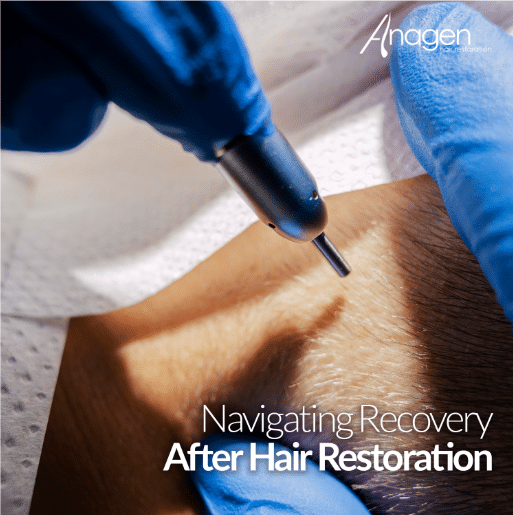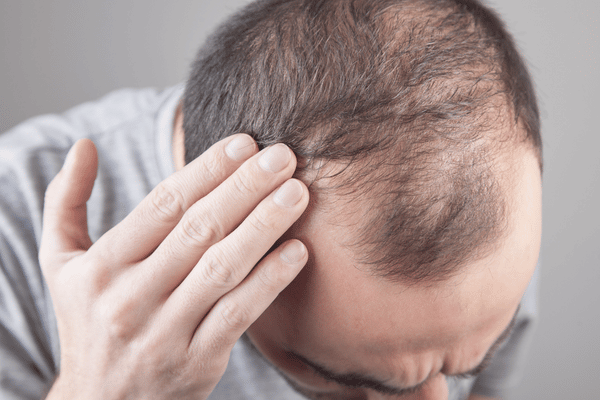Introduction
If you’re considering a hair restoration procedure, you should know what results are realistic and which aren’t. While hair restoration surgery offers men and women of all ages an opportunity to regain their youthful appearance and boost their self-confidence, these options are not designed to stop the aging process or prevent future follicle loss. Our team of experts at The Anagen Hair restoration Maryland clinic work with patients to develop a treatment plan suited to their needs — results are natural-looking hair that is complete and healthy. Here are the facts you should know about hair restoration surgery—and why they don’t negate its value for many people.
A Look at Today’s Most Popular Hair Restoration Techniques
There are several types of hair restoration surgery, each with its pros and cons. The best technique for you will depend on your specific needs.
One method is FUE (follicular unit extraction), which removes individual follicles from your head and transplants them into bald areas using manual or semi-automated devices called Neo grafts. NeoGraft Hair Restoration, a surgical technique that combines modern microscopy to magnify follicles with robotics for removal, makes hair transplantation more efficient than ever before. The NeoGraft method allows doctors to perform numerous treatments daily while providing patients with quality results they are proud to show off. This hair restoration technique removes individual follicles from the back of your head rather than large sections, as would be taken away during a traditional strip hair transplant procedure.
Another option is follicular unit transplantation (FUT), in which large sections of the scalp are removed with a scalpel before follicles are extracted micro surgically. The FUT method yields long-lasting results similar to PRP treatment—though it can take longer and cost more than other options. Once separated from surrounding tissue, these grafts are transplanted into bald patches on top or behind ears–or wherever else you want them. The result is a natural-looking hairline that can be shaped and contoured to look the way you want. A similar approach is used in aging men who have begun to lose hair—their hairlines will be redrawn, giving them a more youthful appearance.
We at Anagen Hair Restoration Maryland provide a range of options for people who are concerned about their hair loss. Talk to one of our experts today to find out which option is best for you. For an additional glimpse into the astounding transformations our work can have on people, check out the Hair Restoration Before and After photos of some of our patients.
Hair Restoration Surgery – What it Can Do
Hair restoration surgery is a good option for anyone who wants to look younger, rejuvenate their appearance, and restore confidence and self-esteem. But it’s important to understand what hair restoration surgery can and can’t do. Here’s what you need to know.
Improve self-confidence and sense of well being
Hair restoration surgery can make you look younger, more vibrant, and more energetic. It’s a great way to improve your self-confidence and sense of well-being.
Healthy, permanent results
Hair restoration surgery is a permanent solution to hair loss. It does not cause any damage to the surrounding skin or scalp and requires no drugs or medication for maintenance. The procedure can treat male pattern baldness, female pattern baldness, and alopecia (patchy baldness).
If you’re considering hair restoration surgery Maryland residents may want to look into our services at Anagen Hair Restoration Maryland.
Minimal down time
You can be back to work and socializing in a few days. There are no stitches or sutures to remove so you won’t have any downtime from the procedure. And because no incisions or scalpels are used in hair restoration surgery, you’ll likely experience minimal pain after your procedure. You can even go back to work right away.
Customize your hair restoration results to fit your desired look.
When you’re thinking about getting hair restoration surgery, choose a doctor who will listen to your needs and help you understand the results. The best doctors in this field are those who will work with patients on an individual basis to achieve customized results that fit their desired look.
Hair Restoration Surgery – What it Can’t Do
Hair restoration surgery is not a cure for baldness. It can’t regrow hair loss for an extended period and cannot stop the aging process or prevent future loss. Hair restoration surgery is only effective in treating male pattern baldness in its early stages before significant hair loss has occurred. If you have been losing your hair for years, then there’s no way to know how much of it will come back after surgery–and even if most does grow back, it may not be as thick as it once was before you started losing your locks.
If you’re considering getting hair transplant surgery because of these reasons (or any others), make sure to talk with your doctor about whether this is right for you – especially if they haven’t done many procedures before
Hair restoration can’t stop the aging process or prevent future loss.
Hair restoration surgery can’t stop the aging process or prevent future loss. Hair restoration is not a cure for baldness, but it can help you regain your confidence and improve your quality of life by restoring some of the fullness to your head. If you’re considering hair transplantation as an option to treat hair loss, there are several things that you should know before deciding to go under the knife:
- Hair restoration surgery does not regrow lost hairs from years ago; it only works in the area around each graft site where new hair has been transplanted.
- Because multiple procedures may be necessary, many patients must pay thousands in additional costs to have their transplant done over several years. Results aren’t guaranteed even then.
Hair restoration surgery cannot regrow hair that has been lost for a long time.
Hair restoration surgery cannot regrow hair that has been lost for an extended period. The best time to consider hair restoration surgery is when you are still in your 20s, as the average age of people who undergo this procedure is in their late 30s.
Hair transplants cannot prevent the progression of genetic hair loss.
Hair transplantation cannot change your genetic code, so it cannot prevent the progression of hair loss that is genetically caused. If you have a family history of balding, consider taking proactive measures to slow down or stop this process. Hair restoration surgery involves placing healthy hair follicles into bald areas around your head and will not prevent further hair loss.
Hair transplant results are not instantaneous.
Hair restoration surgery is a long-term commitment, and results can vary. You should expect to wait between three and six months before seeing any new growth from your transplants. Many factors, including your surgeon’s skill and how much hair you have to work with, can affect the outcome of a procedure.
Transplants are done only with your existing hair.
Hair transplants involve taking hair from one part of your scalp and implanting it in another area. They are not used for people who do not have enough donor hair to transplant. Hair transplants are not effective for people having:
- widespread thinning and baldness
- hair loss due to chemotherapy or other medications
- thick scalp scars from injuries
Things to consider before and after a hair transplant
Hair loss is a common condition that affects most people at some time. Hair loss occurs when you lose more hair than your body can grow back in its normal cycle. If you notice bald patches or thinning hair around your scalp, it may be worth talking to a doctor about. However, before pursuing a hair transplant surgery, you should consider:
Before Hair Transplant
- Whether you are an appropriate candidate for the procedure.
- How much hair loss do you have
- What type of procedure is right for you
- What are the pros and cons
- How much will the procedure cost, and how long it takes to recover
- Whether the transplanted hair will continue growing or you need to get additional procedures.
- Whether or not you have enough donor hair available for transplantation determines how many grafts are required to produce an effective result.
After Hair Transplant
- Take some time off from your daily routine to allow the transplanted hair follicles time to heal. The healing would vary depending on your recovery method and the extent of your procedure.
- Avoid strenuous exercise or strenuous labor for at least two weeks after surgery.
- Avoid taking hot showers or baths for at least two weeks, as this can cause swelling around the donor area.
- Avoid washing your hair with harsh shampoos, which can damage the transplanted hair follicles. Use a gentle soap and pat dry instead of rubbing vigorously
Takeaways
- What it can do: Hair restoration surgery is an effective treatment for male and female pattern baldness. It can help you regain the confidence and self-esteem that comes with a full head of hair.
- What it cannot do: Hair restoration surgery cannot halt aging. It can only help you regain what you have lost. Hair transplant results are not instantaneous; it may take several months to see any new growth from your transplants. Results typically last anywhere between 6 months to 5 years.
Conclusion
Hair restoration surgery can be very effective in keeping you looking youthful and rejuvenating your appearance, but it’s essential to understand its limitations. Remember that Hair restoration surgery is not a miracle cure and won’t make you hairier than before. Still, if done correctly by a qualified professional, it can be one of the most effective—and safest—ways to restore lost locks.
For more information on your hair restoration options, visit our website anagenhairrestoration.com, or give us a call at (301) 591-6552. We’re happy to answer all of your questions and help you find the best treatment plan for yourself.










